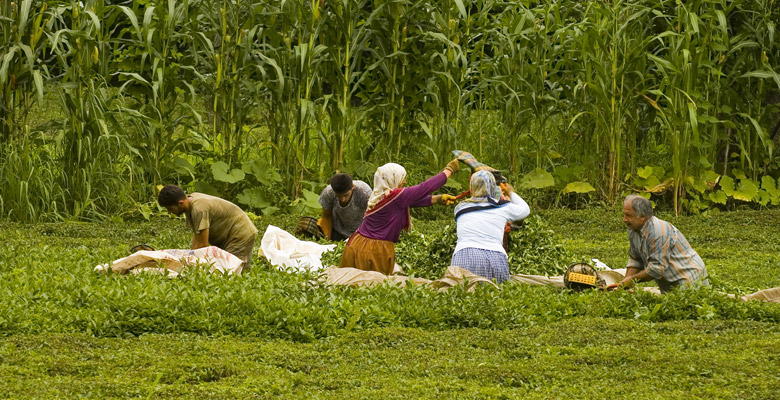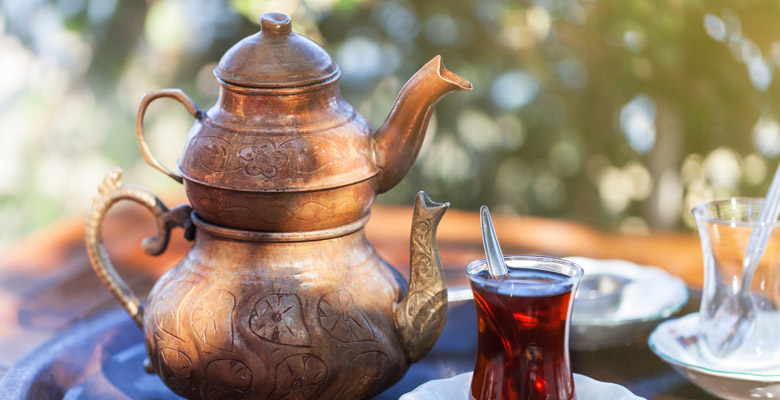Turkish tea: the art of çay
- By Vicki Eğriboyun
- 02 Jul 2018
- Views and reviews
Much more than just a drink, the preparation and enjoyment of tea in Turkey is a complex process. Simpson Travel Manager and long-time Turkish resident Victoria Eğriboyun guides us through the rituals and traditions behind a proper cup – or rather glass – of çay.

"I love çay, though at our house it’s strictly PG Tips or Earl Grey. I pop next door to my brother in law’s house if I fancy a çay, as there’s always some on the go for the seemingly endless stream of people who call by every day. Offering çay is a true sign of hospitality, and many hours can be spent over countless cups of the stuff. I’ve often thought that the lost hours of manpower would be an interesting statistic, though it’s such a part of life here that I truly believe everything would grind to a halt without it."
A little history
"The tea tradition feels as old as time, but in fact Turks only began drinking it in quantity in the 1900s. Coffee had been the most popular drink prior to this point, but in the aftermath of WWI it became very expensive or sometimes simply unavailable, so the Turkish people, encouraged by the founder of the new republic, switched to a home-grown product: tea. Even today, a cup of tea is very affordable, and coffee is seven or eight times more expensive.

Home grown tea
"I never realized until I came to live here that Turkey not only drinks a lot of tea but it also grows it. Most tea is grown in the Rize area, in the north east of the country, along the Black Sea coast. The wet climate and rich soil are perfect for tea production, and the largest grower, Çaykur, produces 6.5 tonnes a day. Turkey produces around 6% of the world’s tea.

The perfect brew
"Turkish tea takes a while to make. Two pots are used, one stacked on top of the other. You fill the lower pot with water, and then add tea leaves to the smaller pot above. The pots then go onto the stove to bring the water to the boil. Once it boils, pour water from the big pot onto the tea leaves in the smaller pot, then add more water to the big pot and replace it on a low heat. The tea then brews for about 15 minutes, until most of the leaves have dropped to the bottom of the pot. When served, the tea glass is filled with around a third of the strong brew, then topped up with the boiling water from the lower big pot to taste. Tea is served black, in traditional tulip-shaped glasses and sweetened with sugar cubes that always come on the saucer.
Variations on a theme
"Black tea is the most popular, however a type of Earl Grey is also produced and sometimes the brew is a mix of black tea and Earl Grey. Çay is also delicious with a couple of cloves added to the pot during the brewing process, and I know that the Imam’s wife at Sydyma used to do hers like that. Sage tea, known as Ada Çay, is meant to have medicinal properties, and it works wonders for a cold.
Whatever way you brew it, and whichever little personal touches you add, this folk saying from Sivas in Turkey sums it all up perfectly: “Caysiz sohbet, aysiz gok yuzu gibidir” (Conversations without tea are like a night sky without the moon)."
View all... Turkey villas Turkey hotels








